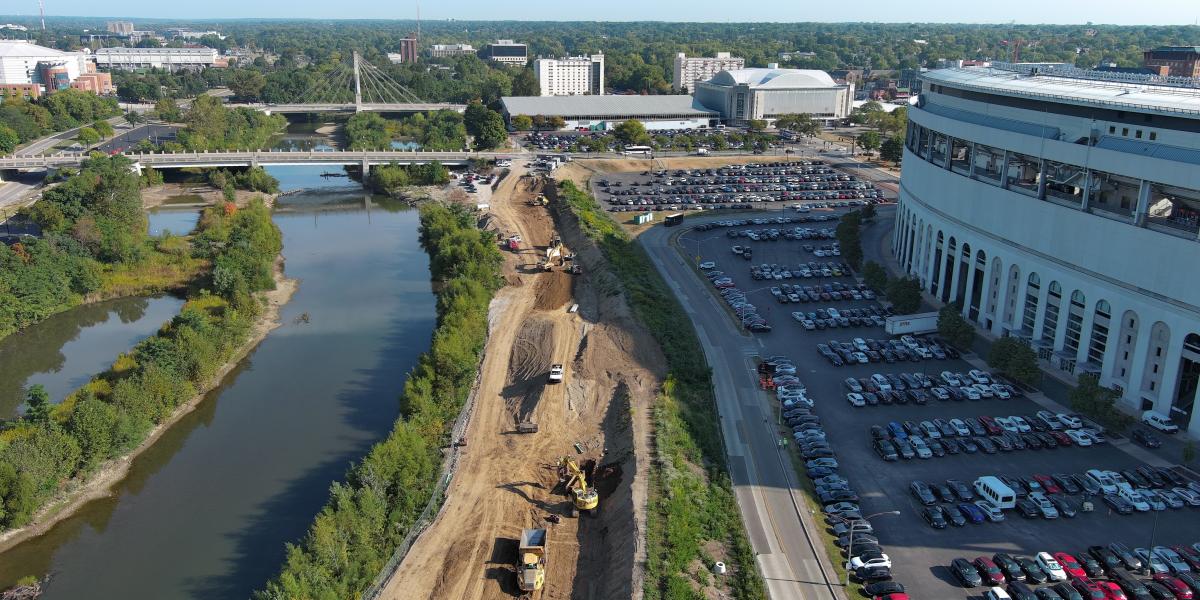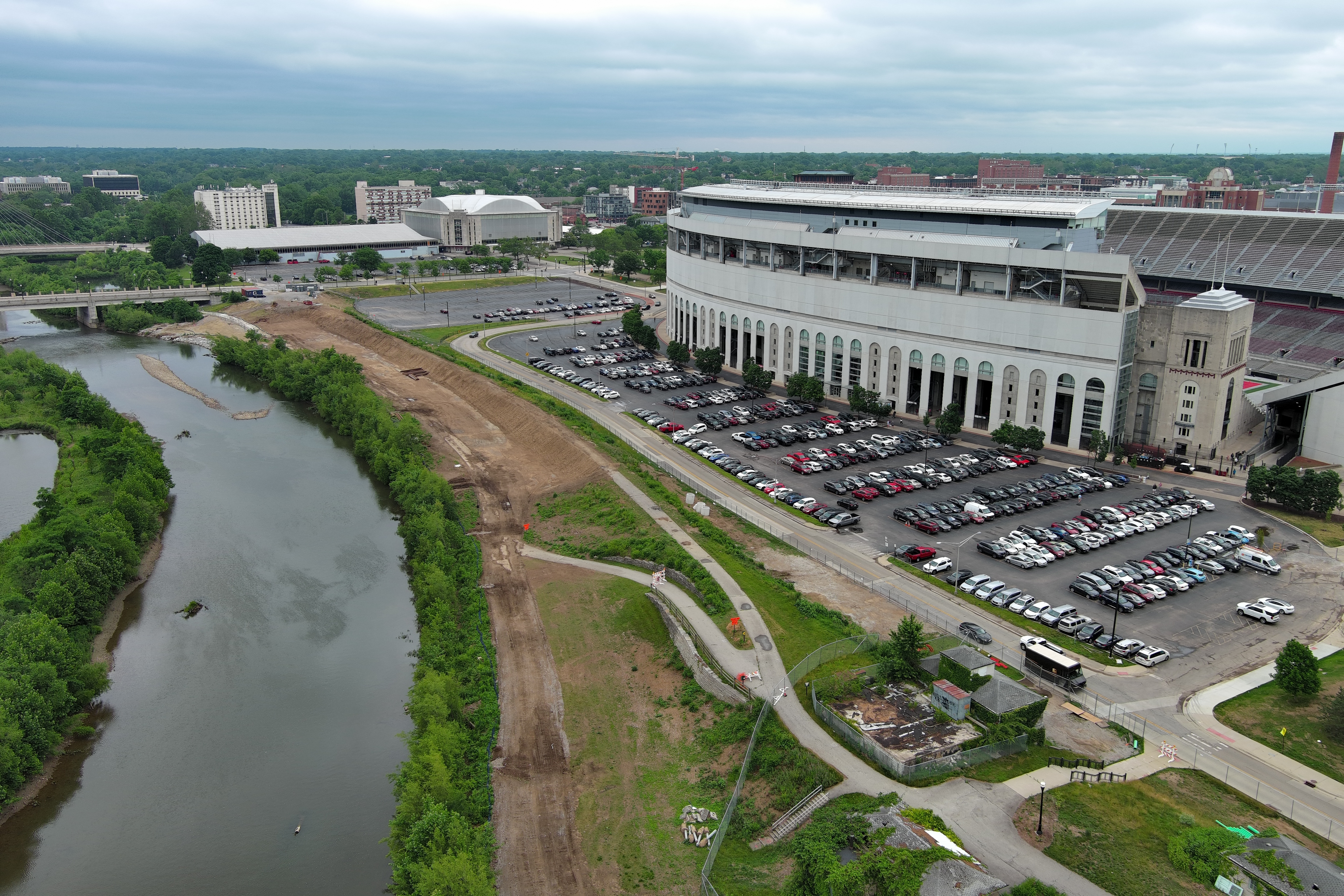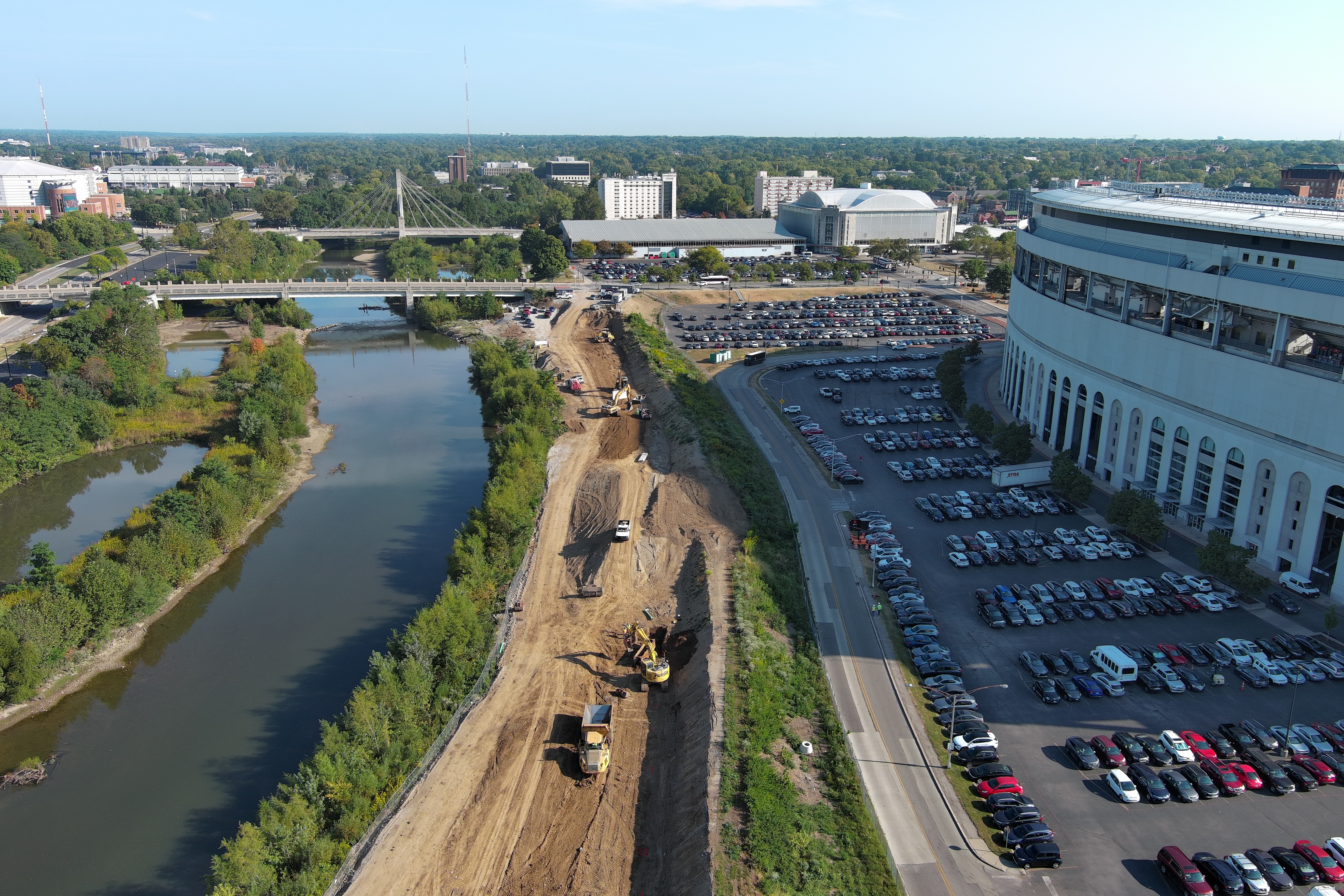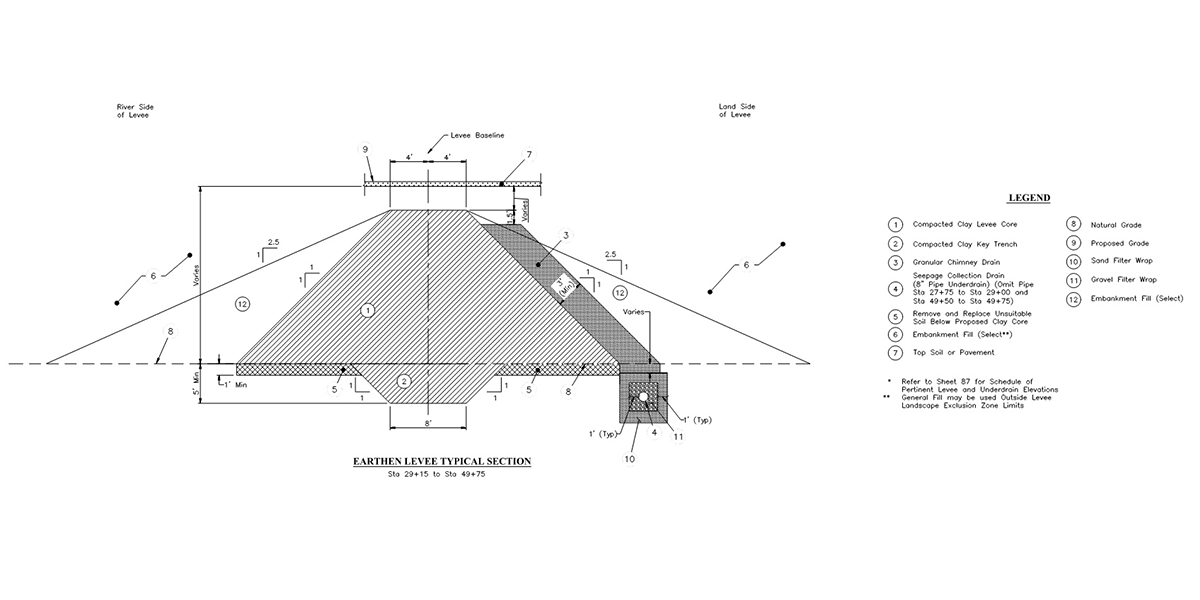If you’ve driven past Cannon Drive this summer, you’re bound to have noticed either the large hole in the ground, the massive concrete stormwater chambers being installed, or a variety of construction equipment. It’s all in the name of a 500-year flood protection plan.
Facilities Operations and Development (FOD) has been working to construct a certified Ohio Department of Natural Resources (ODNR) flood protection levee along Cannon Drive. Once completed and certified, the university will be more protected from a 500 year storm event from the Olentangy River.
“River floods can be catastrophic to properties adjacent to rivers within the flood plan, like portions of the university,” said Tom Ekegren, director of projects for Facilities Design and Construction (FDC) and project manager of Cannon Drive Relocation - Phase 2. “The addition of the levee not only aligns with the city of Columbus’ and university design standards, but stands as an example for flood protection that other universities can look to.”
Construction consisted of removing the existing earth and all contents along the proposed levee alignment. The clay core of the levee is about 15-feet deep. All the existing site features and utilities, and proposed features and utilities had to be coordinated along, through and adjacent to the levee.
In addition to levee construction, other critical activities took place to support ongoing project progress, including:
- Coordination of construction and access logistics around active areas, including Ohio Stadium, residence halls and the Wexner Medical Center
- Installation of steam, water, gas, storm, electrical and communication lines
- Construction of a storm water detention system
- Bridge repairs of the Olentangy River pedestrian bridge
- Detour of the Olentangy Trail
Now that the levee is substantially complete, ODNR will work to review construction and ensure operations are running smoothly prior to certifying the levee.
During the coming months, the university will be able to revise its Flood Emergency Response Plan and incorporate the protection that the levee provides.
“Up to now, if you had asked me what keeps me up at night, my answer would have been our vulnerability to riverbank flooding,” said Robert Armstrong, director of Emergency Management and Fire Prevention for The Ohio State University. “[The flood protection levee] is a huge accomplishment, and our institution is even safer than it was before because of it.”





